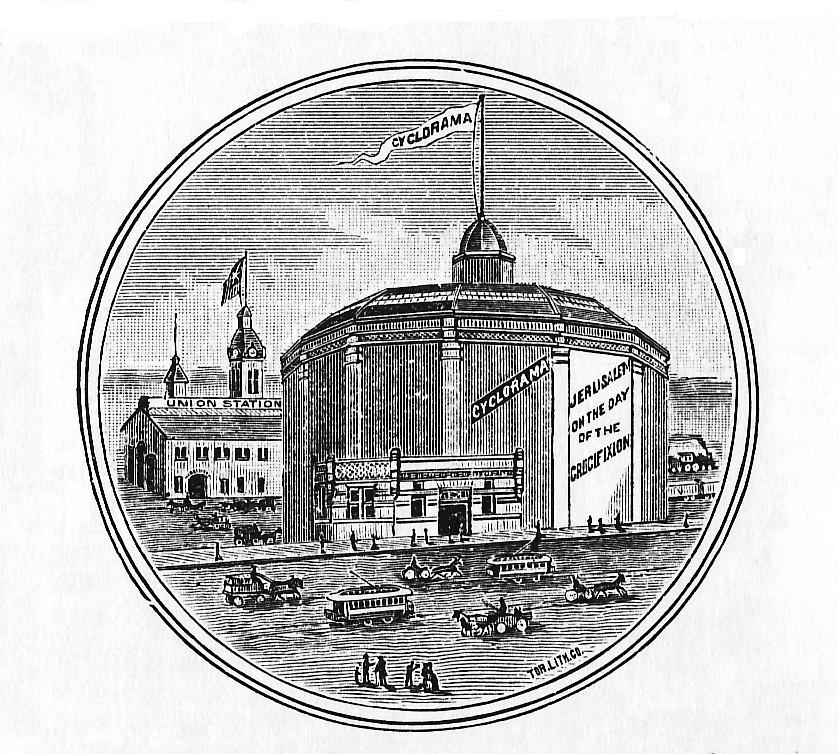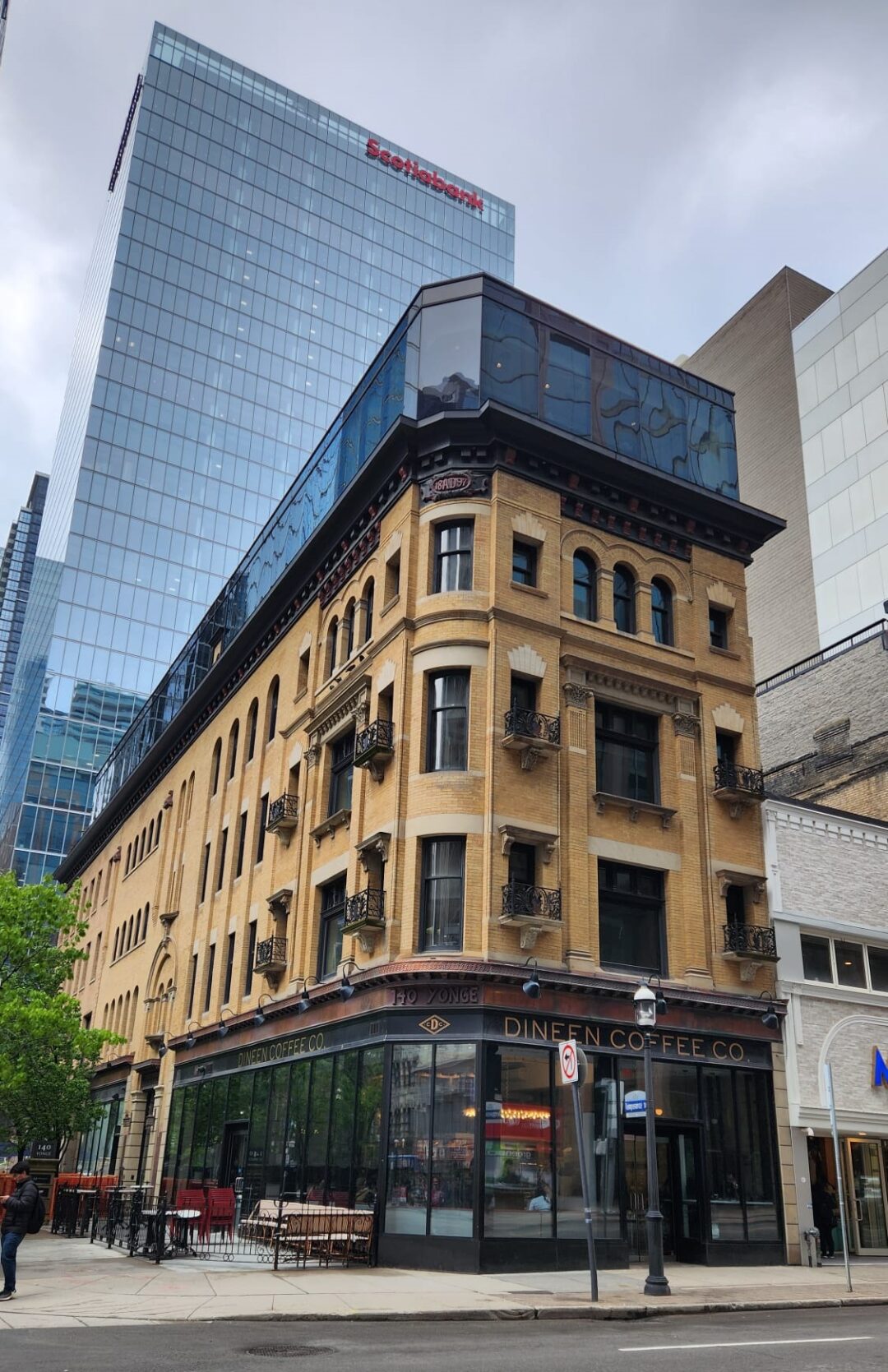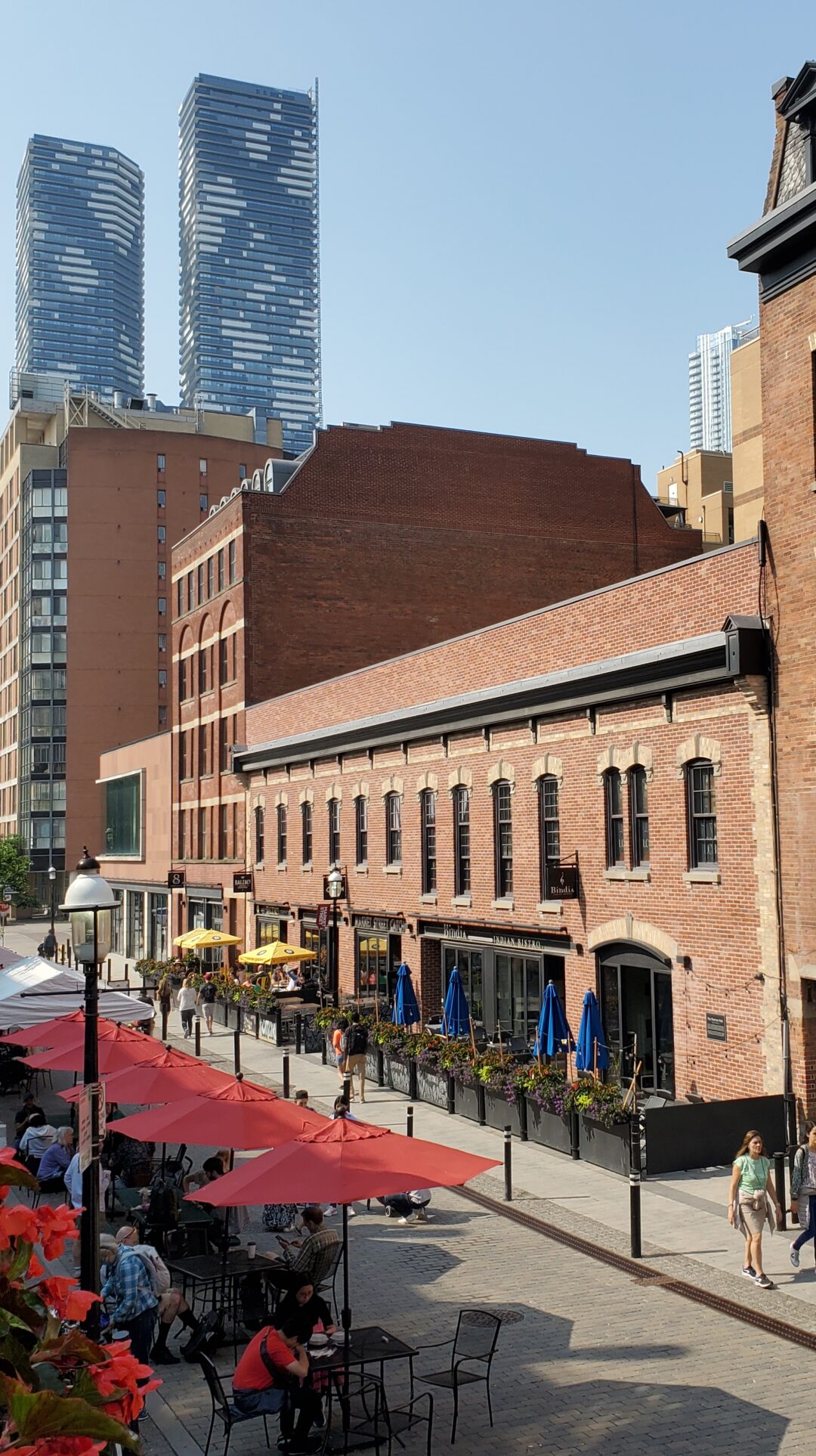By Bruce Bell, History Columnist –
At one time Toronto had a fantastic 16-sided domed structure called the Cyclorama – the ROM, AGO and IMAX theatres all rolled into one. Built in 1887 on the south side of Front Street just west of University Avenue, the Cyclorama exhibited massive cylindrical paintings known as Panoramas.
The Cyclorama’s fabled history began in 1834 when two enterprising brothers, the Waughs, bought a former Methodist Church on the corner of King and Jordan Streets (just west of Yonge there is a plaque) and transformed it into the Theatre Royal to present Panoramas. Panoramas had been invented in 1787 by Robert Barker to capture a panoramic view of central Edinburgh. ‘Panoramas’ soon became a rage all across Europe.
The Waugh’s first exhibit in Toronto, “The Burning of Moscow,” had spectators encircled by a large painted image centred on a burning Moscow before the advance of Napoleon on the city in 1812. It was an enormous success.
By the 1850s the increasing popularity of Panoramas caused these extraordinary paintings to get even larger. Some went on tour as movable Panoramas, enthralling audiences with gigantic painted images on great scrolls of muslin that were positioned on spools and reeled across a stage, suggesting motion.
The most famous moveable Panorama of the 19th century was John Bunyan’s allegorical narrative “Pilgrim’s Progress,” exhibited at Toronto’s St. Lawrence Hall in 1857. Three metres (nine feet) high and almost 275 metres (900 feet) long, it told the story of Christian and his wife Christiana from their doomed existence in the City of Destruction to salvation in the Celestial City as it slowly unraveled on two gigantic spools.
In the 1880s Panoramas reached their peak in Toronto with the construction of the circular Cyclorama on Front Street. A colossal cylindrical panoramic painting of the Franco-Prussian Battle of Sedan, estimated to be seven metres (22 feet) high and 85 metres (279 feet) in circumference, was put on display.
Upon entering the Cyclorama, the audience climbed a low inclined walkway to a 360° view of this immense work of art illuminated, by gaslight.
Two other vast panoramic paintings were shown at Toronto’s Cyclorama: “Jerusalem on the Day of Christ’s Death” and the “Battle of Gettysburg” (from the American Civil War). Between these panorama exhibits over-sized copies of old masters were displayed, with people lining up around the block to see them.
When the Panorama rage came to an end after silent films arrived in the early 1900s, most of these unique cylindrical buildings were demolished or severely altered and their giant canvases cut up into smaller pieces and sold off.
However, some of these masterpieces remain intact, such as the Gettysburg National Military Park Cyclorama Center in Pennsylvania, with the Battle of Gettysburg Panorama on display.
One of the largest panoramas, “The Cyclorama of Jerusalem,” has been exhibited in Ste-Anne-de-Beaupré, Quebec, since 1895. It depicts in minute detail, including dates on trees in the far distance, the day of Christ’s crucifixion.
The Toronto Art Company opened the Cyclorama Building to the public on September 13, 1887. It was quickly hailed as an immense success, “the best of all the worlds’ cycloramas.”
However, it came to a depressing and pitiful end.
In the early 1900s Toronto’s once popular Cyclorama became home to the Petrie Machinery Company, and in the 1920s a showroom for the Elgin Ford Company. Sadly, this once-fashionable attraction ended its days as a parking garage, its interior walls that once displayed spectacular works of art covered in grime, grease and gasoline.
Although the Cyclorama Building was designated and even listed on Toronto’s inventory of historic treasures, it bit the dust in 1976 to make way for the high-rise complex currently called Citigroup Place. No plaque marks its history.




